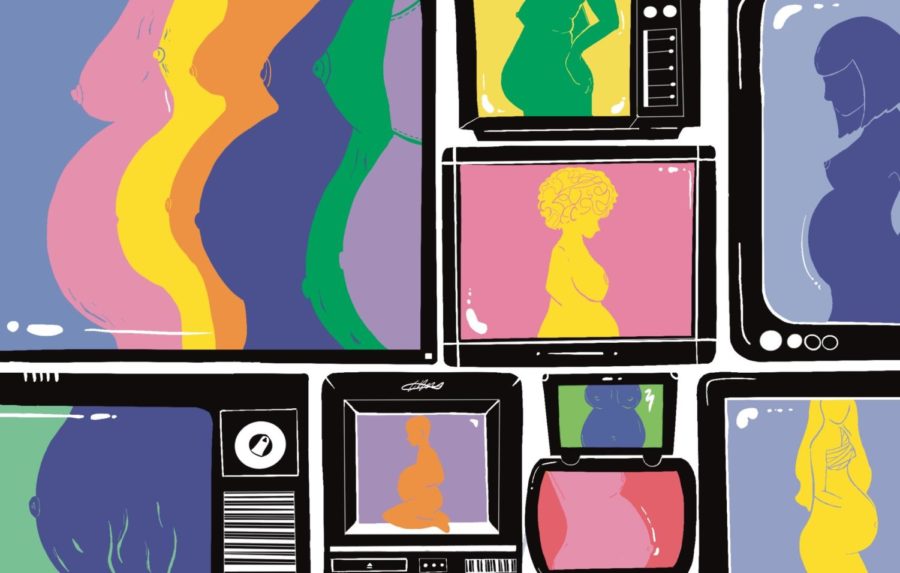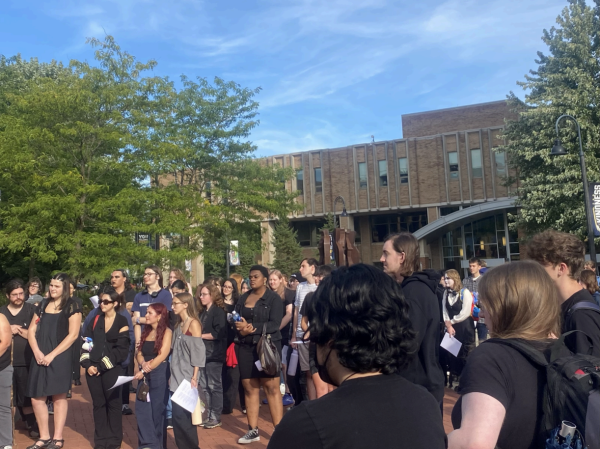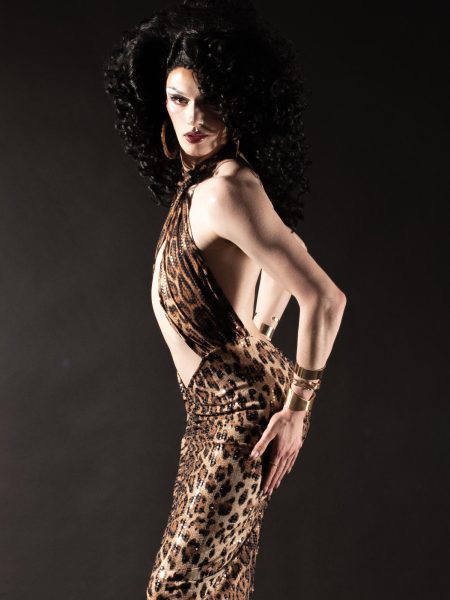the significance of rihanna’s pregnancy announcement
On Feb. 12, the Super Bowl LVII Halftime show opened with Rihanna standing on a suspended platform above the field, decked head to toe in red. As the camera panned out, she pushed her jacket open and ran her hand over her belly.
Immediately, #Rihanna was trending on Twitter with streams of discourse surrounding speculation about her belly. Was this postpartum fat from her first baby born in 2022? Had she simply gained weight? Or was she pregnant again? Of course, this was a pregnancy announcement to end all pregnancy announcements, because, while many A-list celebrities announce pregnancies in the news, Rihanna revealed her pregnancy on the most watched annual program in the U.S. However, even just a couple decades ago, it was taboo to be pregnant on screen. It wasn’t until an episode of “I Love Lucy” aired in 1952 that a pregnant woman graced America’s television screens.
“I Love Lucy” was a sitcom that aired from 1951 to 1957, named for the show’s creator, Lucille Ball. Ball was already unusual for her work as a woman in the industry, writing and starring in her own show alongside her husband Desi Arnaz, who also starred as her husband Ricky in the show. While the couple already had a son, who sometimes appeared on screen, the concept of actually showing a woman pregnant was highly scandalous. Lucy and Ricky slept side by side, each in their individual twin beds, simply because showing them in the same bed on a daytime television show was deemed too inappropriate in the 1950s. Pregnancy was a step even further, because not only did it hint at the idea of sex, it “actually [acknowledged] and openly [displayed] the biological consequences of S-E-X.” At the time, the word “pregnancy” was also taboo, not just on television, but also in American households. Thus, the episode in which Lucy reveals her pregnancy to her husband, is titled “Lucy Is Enceinte.” The use of the French word for pregnant as well as terms like “expecting” were just a few ways they skirted around the “p-word.”
It’s odd that in a society that celebrates motherhood, and often conflates motherhood with womanhood, depicting a pregnant woman was so controversial for so long. Unfortunately, something that grips America even tighter than motherhood is the concept of purity culture. Purity culture is mostly aimed at teenage girls and young women. It’s concerned with female sexuality, and often puts pressure on them to not sexualize themselves — ironically, sexualizing them. This can be exhibited in school dress codes where body parts such as shoulders and collarbones are to be covered, despite not being erogenous zones, and typically not enforced on male students. This way of thinking has resulted in a lack of sex education for young women, instead, shrouding sex in shame, sexual desire in guilt and leaving sex as something men “do” to women. Expecting parenthood from young women while also condemning them for sex is conflicting, and is perfectly mirrored in TV’s history of concealing the idea of pregnancy.
Fast forward to 2009: MTV aired its first episode of “16 and Pregnant,” which, while showing progress in depicting pregnancy from Lucille Ball’s day, still met lots of controversy. Parents or not, people across the nation feared that this show glamorized teen pregnancy, as the show essentially boosted the teen mothers into reality TV stars. However, findings in “Media Influences on Social Outcomes: The Impact of MTV’s 16 and Pregnant on Teen Childbearing” by Melissa S. Kearney and Phillip Levine state that “exposure to 16 and Pregnant was high and… it had an influence on teens’ thinking regarding birth control and abortion.” So though the show struck fear in parents’ hearts, it may have helped drop teen pregnancy rates, just by demonstrating the hardships of teen pregnancy on TV.
Years later, in 2018, a 20-year-old Kylie Jenner revealed the birth of her daughter. Though of course it was met with some scrutiny, by and large, this announcement was more so highly celebrated, if nothing else, for exciting celebrity gossip. As one 2018 TMZ article put it, “STOP THE PRESSES … a pregnant Kylie Jenner’s been spotted out in the real world for the first time since September!!!” Despite Jenner not revealing her pregnancy on “Keeping Up With the Kardashians” for privacy reasons, this again showed the social shift of accepting pregnancy, especially out of wedlock young pregnancy, into the everyday, mainstream media.
The growing ease in which pregnancy is shown on screen and discussed in news has, whether we realize it or not, led up to this point: Rihanna, standing in front of the world’s biggest audience, pregnant and proud. Pregnancy has not been a censored word for decades now, but from “I Love Lucy” to the Super Bowl LVII Halftime Show, pregnancy, and all its implications, can be celebrated more than ever.
Support Student Media
Hi! I’m Catie Pusateri, A Magazine’s editor-in-chief. My staff and I are committed to bringing you the most important and entertaining news from the realms of fashion, beauty and culture. We are full-time students and hard-working journalists. While we get support from the student media fee and earned revenue such as advertising, both of those continue to decline. Your generous gift of any amount will help enhance our student experience as we grow into working professionals. Please go here to donate to A Magazine.









